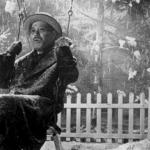 Review of Ain’t Them Bodies Saints, Directed by David Lowery
Review of Ain’t Them Bodies Saints, Directed by David Lowery
Ain’t Them Bodies Saints is more to be experienced than watched. Taking place in 1970s Texas, the film is a vignette of the Hill Country where simple lives take tragic turns. Bob Muldoon (Casey Affleck) and Ruth Guthrie (Mara Rooney) are a couple passionately in love with an unexpected child on the way. Bob, however, is a criminal. During a shootout with the police at a farm, Ruth’s bullet finds Patrick Wheeler (Ben Foster). Bob takes the fall for her and ends up in prison, while Ruth is cleared of all charges and gives birth to their daughter. Ruth raises the daughter in a tranquil town, spending evenings caring for the little one. But this picturesque life is shattered when Bob escapes from prison, committed to reunite with his lover and the daughter he’s never met.
What immediately strikes the audience is that Ain’t Them Bodies Saints is as much about the time and place as it is about the characters. The opening title line is not in fact “Ain’t Them Bodies Saints,” but “This Was in Texas,” reserving the actual film title to the conclusion. David Lowery (director) has explained the title as a phrase in an old folk song he heard once, lending the airs of folk Americana to the movie. This atmosphere suffuses the footage with long takes of vast Texas landscapes and empty spaces. The title also ambiguously points to the overall goodness of people. The goodness of the place is reflected in the goodness of the people.
A striking element of Ain’t Them Bodies Saints is its empathetic characters. Different people find themselves drawn to one of the three primary characters: Bob, Ruth, and Patrick. Lowery could easily have made Patrick the evil policeman seeking revenge as he tries to track Bob’s whereabouts, but Patrick is just doing what he knows is right. All three are seeking the good, but the good for each person happens to contravene the others. Audiences will find themselves yearning for all three to have their desires fulfilled, yet reluctantly accepting that not everyone can have their way. Simple lives lived in a simple place are complicated by society and the law.
Violence is not celebrated or fashioned as entertainment. The few times bullets are shot, they are not euphoric moments, but acts of desperation that end in remorse. Violent scenes also end as suddenly as they begin. Instead of waiting eagerly for the action sequences, we find ourselves wanting characters to avoid bloodshed and to just get along.
Ain’t Them Bodies Saints distills a reality that most people carry on quiet lives, seeking to do good with what they have, but conflict still arises. This is perhaps why the film will resonate so well with its viewers. But perhaps people identify so well with Ain’t Them Bodies Saints because it is how they, with great bias, would depict their own conflicts. It’s common now to affirm the good inside all people.Good people conflict with good people because of happenstance. But we know that conflict occurs due to “desires that battle within you…You wants something but don’t get it. You kill and covet, but you cannot have what you want” (James 4:1-2).
Much as this 1970s idyllic image of Texas is a historical construct, there is a fantastical sheen to the story of Bob, Ruth, and Patrick. As Ain’t Them Bodies Saints ends, we remember that we live in a real world and where we’ve returned from was an exercise in suspended reality. Based on our own merit, none of us are saints. We are sinners.












